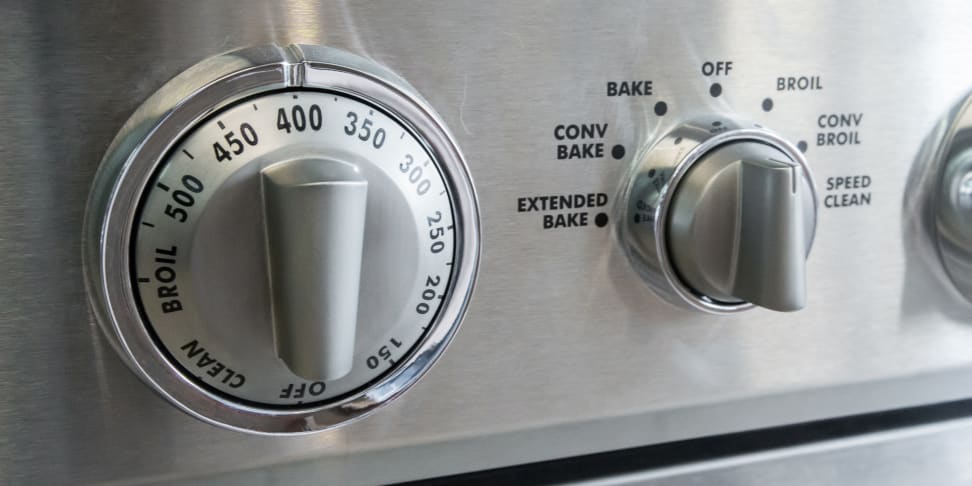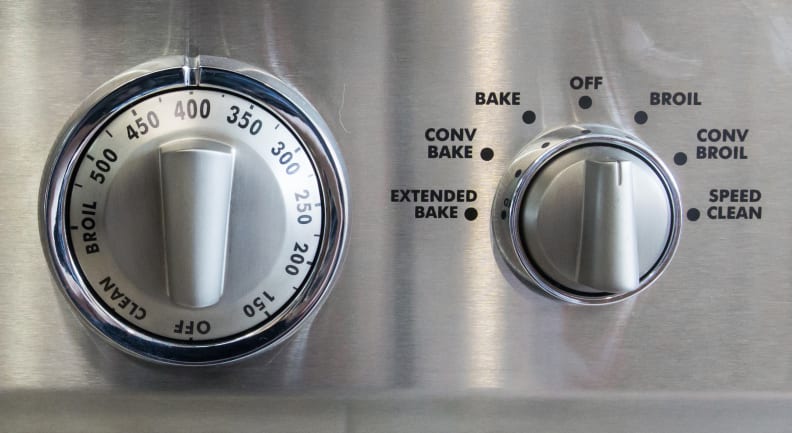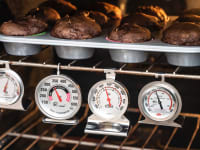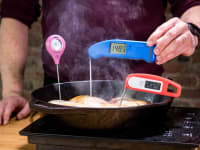 Credit:
Reviewed / Christopher Snow
Credit:
Reviewed / Christopher Snow
Recommendations are independently chosen by Reviewed's editors. Purchases made through the links below may earn us and our publishing partners a commission.
We’ve tested and reviewed a lot of ovens over the years, and one thing has been a constant: Every oven has specific temperature control. Want to start baking? Select a temp, such as 350°F, and the heating element switches on. That’s the deal we’ve made with our modern ovens.
Sounds fairly straightforward, right? Nope. It’s all well and good to choose a temperature that corresponds to a recipe, but your actual oven temperature is typically far from exact.
Temperature controls vary between models and manufacturers, but most work similarly: The temperature will ramp up initially, climbing above your desired temp to compensate for heat loss when you open the door to place your food inside. The heating element will then begin to cycle on and off. If your oven is well-calibrated and you've set it to 350°F, the element might stay on until the cavity hits 370°F, then switch off, then switch back on when it dips to 330°F.

Temperature varies throughout the oven cavity, it varies over time, and it varies between ovens.
Oven technology has come a long way from the days when the best way to tell if an oven was up to temp was by holding your arm inside and measuring the time it took for the heat to become unbearable. But at the end of the day, your oven is basically an insulated box with a heat source inside.
We've come across a precious few ovens in our testing that heat to the exact specified temperature and consistently remain there. The 36-inch Bosch HIS8655U and the 30-inch Bosch HII8057U stood out as ovens that heat accurately and hold consistent temperature.
Typically, heat varies throughout the cavity, it varies over time, and it varies from one oven to another. In fact, temperatures recommended by most recipes were likely developed specifically for the author’s oven, as pastry chef Joanne Chang told us.
What to do, then? Are we wasting our time reviewing cooking boxes that vary in temperature no matter what? The short answer is: No.
We know that oven heat can fluctuate, and most ovens experience temperature variation creating conditions that are rarely uniform throughout the cavity, but our tests give us a reliable sense of whether there are problematic hot and cold spots in a given model. The best-performing ovens maintain a steady temperature that is consistent throughout the cavity.

If you want to measure specific temperatures, measure the temperature of your food rather than that of the oven cavity.
If you're cooking in a particularly quirky oven, try not to worry too much about accuracy. According to food guru Mark Bittman, oven temperatures are "a convention.” The former NY Times columnist told Slate that he prefers to think of oven temperatures as four broad categories of heat that work for different cooking tasks.
“Really low, under 275 degrees; moderate, between 275 and 350; high, over 350 but under, say 425; and maximum,” he says. “But I don’t think about those numbers ... I just think ‘what am I trying to do here? Blast this stuff or treat it gently, or something in between?’”
Common sense and practice, then, are key to using your oven to its best effect. Both Bittman and Chang urge home cooks to pay close attention to when food looks, smells, and feels ready, rather than relying on cook times recommended by a recipe.
To save time and headaches, you can also employ an oven thermometer to get an accurate read of what's going on inside your oven. And if precision is important to you, an instant-read thermometer should do the trick.
After all, the temperature of your food itself is a far better indicator of doneness than the number on the oven's display.



